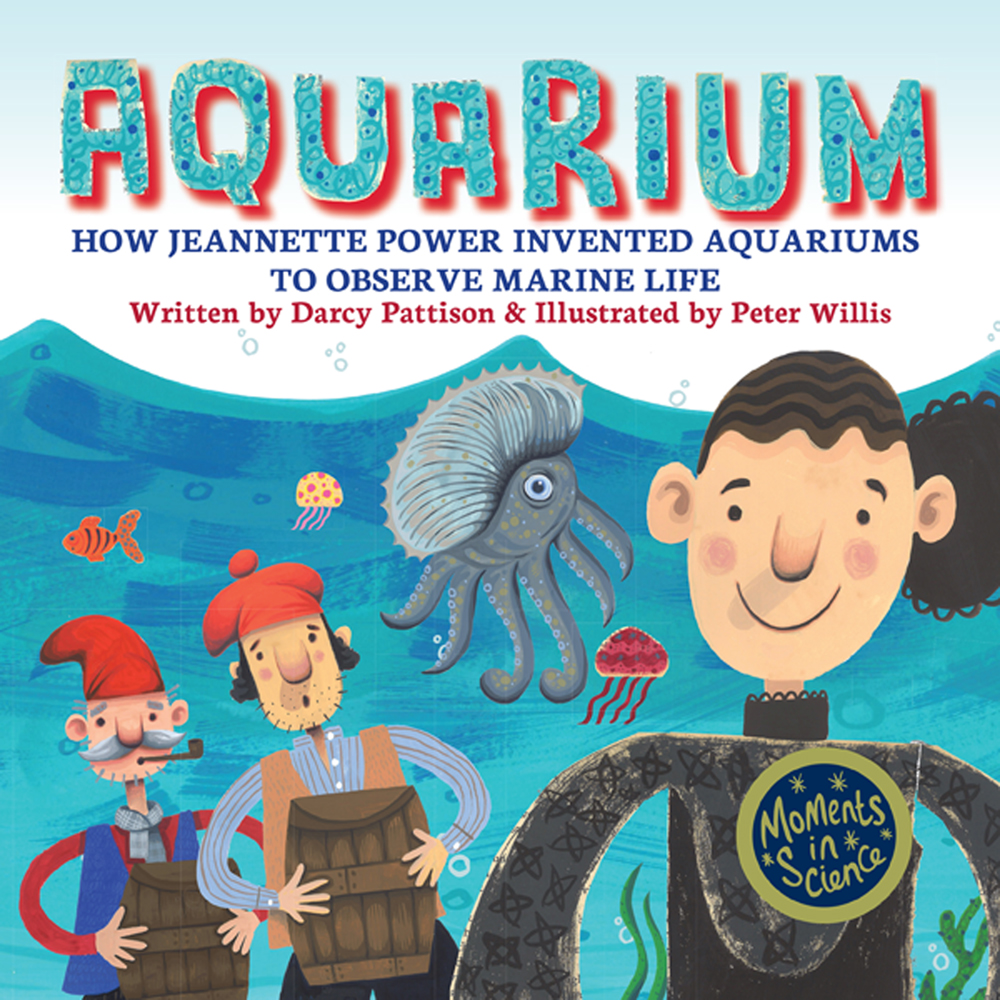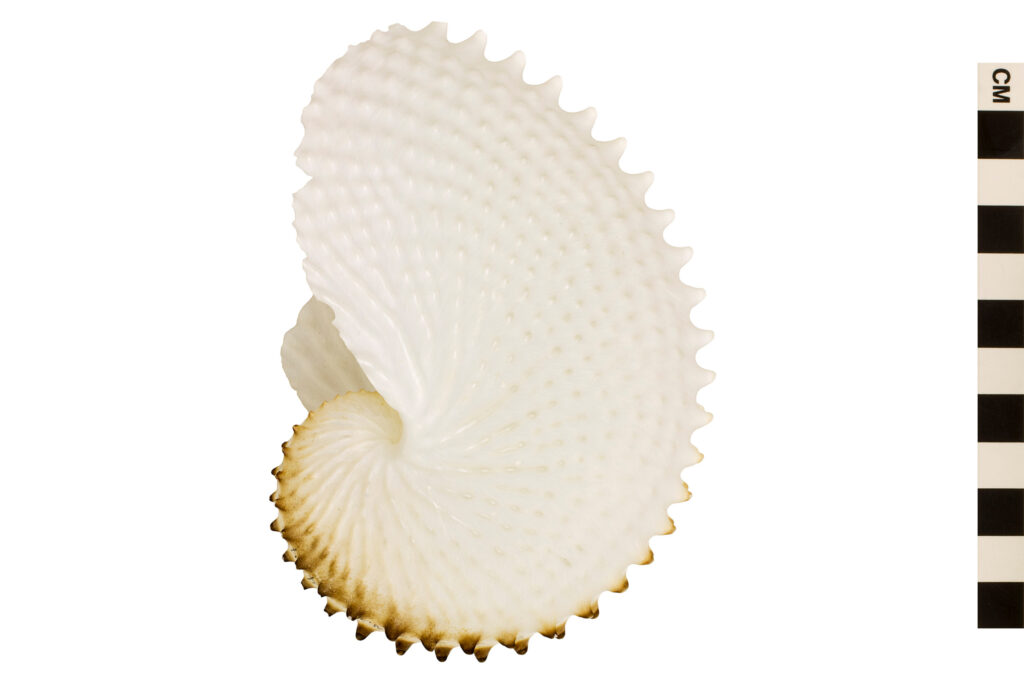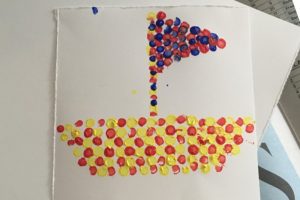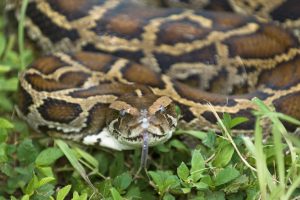GUEST BLOGGER DARCY PATTISON
My new addition to the Moments in Science series, AQUARIUM: How Jeannette Power Invented the Aquarium to Study Marine Life, is about a French female inventor. When she married, she moved from France to the island of Sicily, where she fell in love with the Mediterranean Sea and its creatures. She wanted to know more about the marine life, but in the early 1800s, scientists just studied dead animals. Power knew that she had to observe the marine animals alive, or she would never understand them.
At first, Jeannette had fishermen save specimens in barrels, but it was hard to see the animals there. For smaller animals, she gave them crystal vases with corks. But what about larger animals? The crystal vases worked so well that she realized she could use glass to create a special kind of cage – and the aquarium was born.
Discuss the book
Read the story aloud with your class. The story is about the woman Jeannette Power, a unique octopus species, and how Power was able to observe the octopus to answer scientific questions.
Is this a biography of Power? A biography of the Argonauta argo?
Where did the events take place?
What observations are included in the story?
How did Power discover the answer to the scientific question of how the Argonauta argo gets its shell?
At the end of the story, explore the back matter about the Argonauta Argo octopus. What makes this octopus unique? Discuss the scientific question that Power needed to investigate.
Problem-solution
Inventions solve problems. For example, the lightbulb solves the problem of how to see in the dark.
What problems do these inventions solve?
- Fork
- Cell phone
- Wheel
- Compass
- Printing press
- Vaccines
Jeannette Power had a problem. To solve the problem, first she had to be able to state the problem. How would you describe her problem? (She needed to study live animals, not dead ones.)
Once the problem was clear, Power could invent a way to keep animals alive so she could observe them. To work, her invention would have to 1) keep the animals alive, and 2) allow her to observe them.
Discuss aquariums.
How do they keep animals alive?
How do they allow for observation?
Was the aquarium a successful invention for Power? How could you improve it?
Imagination versus observation
Powers realized that direct observation was important for scientific study. Scientists were arguing about how the Argonauta argo got its shell. Some thought that they found the shell, like a hermit crab who often moves to a new shell when it outgrows the old one. Others thought the octopus made its own shell, but no one had an idea how that could happen.
“I did not study this marine animal…using the imagination but by experimental observations.”
Jeannette Power
Discuss what Power could have learned about the Argonauta Argo octopus with her imagination. Discuss what Power did learn about the Argonauta argo octopus with her observations of over 1000 individual octopuses.
Try it out
Look at this picture of a female Argonauta argo octopus shell. It’s a “dead octopus,” the shell that is left when the body decays. Write an “informative paragraph” using your imagination.
Now, watch this video of the octopus and make observations.
- When was this video made? Where was it filmed?
- 00:05 seconds: Describe the Argonauta argo shell.
- 00:09 seconds: Are the octopuses close to the surface or in deep water? How can you tell?
- 00:13 seconds: How do the octopuses interact? (Watch the two octopuses who are fighting. When they turn loose, one octopus reaches out its arms to grapple a third octopus.)
- Talk about the group of octopuses. What do you observe?
- The last half of the video doesn’t show many octopuses. Read the description of the video to find out why.
- What else did you observe?
Write an informative paragraph about your observations.
Discussion
How are the two paragraphs similar?
How are the two paragraphs different?
Why is observation important for scientists?
Is it important to know when and where the octopuses were filmed? In your informative paragraph, did you write about when and where you made the observations?
Featured image credit: “Aquarium” by ChaChaWei is licensed under CC BY-NC-SA 2.0.
Children’s book author and indie publisher DARCY PATTISON writes award-winning fiction and non-fiction books for children. Five books have received starred PW, Kirkus, or BCCB reviews. Awards include the Irma Black Honor award, five NSTA Outstanding Science Trade Books, three Eureka! Nonfiction Honor book (CA Reading Assn.), two Junior Library Guild selections, two NCTE Notable Children’s Book in Language Arts, a Notable Social Studies Trade Book, an Arkansiana Award, and the Susannah DeBlack Arkansas Children’s History Book award. She’s the 2007 recipient of the Arkansas Governor’s Arts Award for Individual Artist for her work in children’s literature. Her books have been translated into ten languages. Find out more at MimsHouseBooks.com
Always active, before her tenth birthday, she (almost) climbed the Continental Divide, turning back at the last twenty yards because it was too steep and great climbing shoes hadn’t been invented yet. She once rode a bicycle down a volcano in Bali, Indonesia and has often hiked the Rockies. She recently hiked New Zealand’s backcountry for a taste of Kiwi life, and then strolled the beaches of Australia. On her bucket list is kayaking the Nā Pali Coast of Hawaii and eating curry in Mumbai.
- Website: https://mimshousebooks.com
- Twitter: @FictionNotes
- Facebook: https://facebook.com/mimshousebooks
- Instagram: https://instagram.com/mimshousebooks












Leave a Reply
Your email is safe with me.